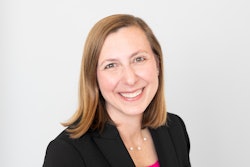Chicago, Los Angeles, and New York City—the largest school districts in the country—have announced plans for remote instruction and modified schedules in the fall. Despite acknowledging that, in some places, the measure is necessary to tame coronavirus transmissions, UN Secretary-General António Guterres sounded an alarm to the “generational catastrophe” caused by ongoing school closure. While the negative impact of online classes on school-age children has been largely discussed, much of the higher education community has not fully considered the detriments of distance learning to college students.
 Dr. Nara Roberta Silva
Dr. Nara Roberta SilvaWhen the pandemic broke, there was extensive coverage on the unequal access to the Internet and disparities in household conditions among students suddenly forced from campuses and classrooms. But one key point is missing in the conversation as colleges and universities rush to finish plans to offer classes, backtrack on initial ideas to hold in-person meetings, adjust their online platforms, and, eventually, provide devices to those enrolled in the fall semester. This key point is students’ unequal ability to manage their own learning in a virtual environment. Distance learning brought by the pandemic has exacerbated the cultural capital abysm in higher education.
I come from a working-class family and know in the heart the importance of cultural capital to one’s education. Attending a prestigious university in my home country has exposed me to individuals with experiences and skills I didn’t have—and, until that point, didn’t even know the relevance. Slowly and painfully, I got aware of what to do, what beyond the regular content I needed to learn, what to speak if I wanted to succeed in that environment. Around a decade later, with a Ph.D. and settled in the U.S., I had to figure out a new academic culture—now in a language I learned as an adult and under larger cultural standards with which I was unfamiliar. Higher education institutions are especially enigmatic to outsiders.
While my background has made my path in higher education arduous, it also positioned me well to identify the barriers my students recurrently experience. When classes abruptly moved online in the spring, I was sure that remote learning would bring remarkable challenges to working-class and minority students—the students I teach today—even with the brand-new devices eventually lent by the school. The impossibility to fully enjoy instruction because of the so-called hidden curriculum contributes to the unevenly distributed outcomes of education and, consequently, persistent larger inequalities.
Online courses rely on student autonomy because the content needs to be handled more diligently than by those sitting in the class. But time management and sense of agency are traits unequally cultivated across social groups. Reduced contact with the instructor—in the classroom and on campus more largely—results in the need to take ownership of learning. To expand the chances to succeed, students should reach out to the professor to address their needs and even anticipate these needs. This requires the ability to craft effective emails as well as have a degree of easiness with authority figures—both of which are class-inscribed behaviors usually salient in the affluent and middle-class strata. While posting on social media via cellphone and reading a text on a computer screen have become trivial, online learning requires much refined digital literacy. That’s because students should feel comfortable to manage interactive and choice-guided tools such as hyperlinks, audio clips, charts, as well as become savvy in evaluating the content offered to them. Practices and dispositions to technology—beyond hardware and connectivity—are shaped by one’s social position and affect what students achieve in college.
Before COVID-19, online classes were marketed as a convenience to students with a busy work or personal schedule and, for many, also as a way to embrace students who don’t feel comfortable in the classroom because of social anxiety and other mental health issues. But these concerns are addressed with curriculum and pedagogical strategies—not simply by expanding online offerings uncritically. Now that remote learning is required for the sake of public health, it is crucial that higher education institutions and educators are attentive to the inequalities underlying and strengthened by the online format.
Professors should adjust their approach and be more mindful about the extent to which inequalities can affect their students. Colleges and universities should provide learning support to address the preparedness gaps in the student body—such as tailored training for distance learning. Certainly, classes must be held online for now to minimize the spread of the virus. But if the broader needs of working-class and minority students aren’t met, the catastrophe envisioned in primary and secondary education will be replicated in higher education.
Dr. Nara Roberta Silva is an associate faculty member at the Brooklyn Institute for Social Research and an adjunct assistant professor of sociology at Lehman College, CUNY.


















